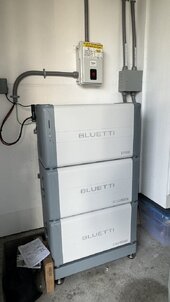Pretty much as the title says...
Obviously inverters that operate with HV batteries are not new, but I seem to be noticing them more now than 18 months ago. Is it just me, or is that the way the industry is going?
My concern is whether such a trend (if it indeed exists) will result in more proprietary solutions that make it harder for us DIYers to build our systems.
What triggered me to start this thread, is hearing of (in the UK) a FoxESS system being proposed that had a strange battery capacity of 2.9kWh. When I looked into it, it referenced a nominal battery voltage of 57.6V. My first reaction was "what chemistry", but their brochures stated LFP - which fits an 18s architecture. It seems FoxESS have a stackable HV solution of between 2 and 7 "units" of 2.9kWh, with voltage range of 115V to 403V. Proprietary, or what?

Obviously inverters that operate with HV batteries are not new, but I seem to be noticing them more now than 18 months ago. Is it just me, or is that the way the industry is going?
My concern is whether such a trend (if it indeed exists) will result in more proprietary solutions that make it harder for us DIYers to build our systems.
What triggered me to start this thread, is hearing of (in the UK) a FoxESS system being proposed that had a strange battery capacity of 2.9kWh. When I looked into it, it referenced a nominal battery voltage of 57.6V. My first reaction was "what chemistry", but their brochures stated LFP - which fits an 18s architecture. It seems FoxESS have a stackable HV solution of between 2 and 7 "units" of 2.9kWh, with voltage range of 115V to 403V. Proprietary, or what?



